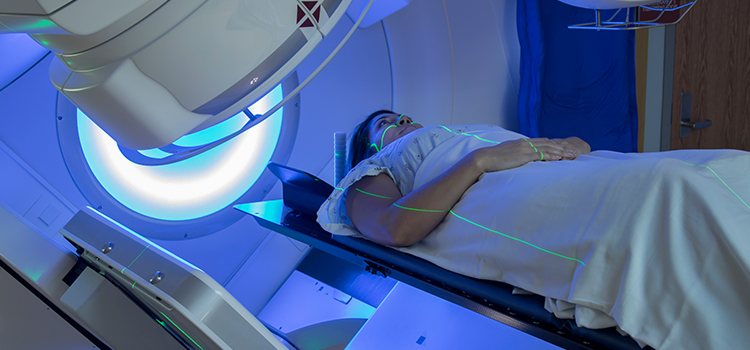Of the various treatments available for treating cancer – radiation therapy is one of the commonly used techniques. It makes use of high-energy radiation for shrinking tumours and killing the cancer cells. Some of the commonly used radiation types include the X-rays, charged particles and gamma rays. The radiation is delivered through a machine, either from outside the body or internally. The radiation that’s given from outside is known as the external-beam radiation therapy while the one given internally is called the internal radiation therapy – known as brachytherapy. Most of the cancer patients happen to receive radiation therapy at some point of their treatment course.
A cell turns cancerous when the DNA gets damaged and the cell deviates from its path as a result of which it starts multiplying uncontrollably. Radiation therapy works by destroying the DNA of the cancer cells either directly or by creating charged particles in the cell that work to destroy the DNA. When the DNA of cancer cells gets destroyed, they either stop multiplying or die. When the cells die, they are further broken and discarded off the body through its natural process. However, during this process, radiation therapy even harms the normal cells round, which further leads to side effects. When a patient is to be given radiation therapy, the doctor will take note of the probable damage the normal cells may have to undergo and the therapy is planned accordingly. Radiation therapy is administered with two objectives – curative and palliative. When the objective of radiation therapy is to cure the cancer then it will work by removing the tumour or preventing its recurrence. For curative purpose, radiation therapy is given as a stand-alone treatment or is combined with radiation therapy. For palliative purpose, radiation therapy works with the objective of relieving the cancer symptoms and cut down the discomfort the patient is experiencing. It all starts with your treatment planning, known as stimulation. During this process, your doctor will identify the location of your tumour through imaging scans; computed tomography (CT) and magnetic resonance imaging (MRI). Once stimulation is done, the next thing is determining the precise area that has to be treated. Based on the location, the dose required will also be decided. The area determined for the treatment will not only include the tumour but also some healthy tissues surrounding it. Healthy tissues are selected for: Taking into account the movement of the body, right from breathing and usual movement of the organs in the body, which can alter the tumour location between treatments. For reducing the possibility of tumour repetition from the cancer cells that spread to the healthy tissues next to the tumour.
External-beam radiation therapy: This radiation type is mostly delivered as photon beams, x-rays or the gamma rays. Photon is the unit of light and is known to be the bundle of energy. The energy amount present within the photon tends to vary. Photons that are found in gamma rays contain more energy as compared to the x-rays. This radiation type is administered with the help of a machine known as the linear accelerator (LINAC). This machine makes use of electricity for forming a current of swiftly-moving subatomic particles which in turn creates high-energy radiation used in treating cancer. If you are being given the external-beam radiation therapy, then you will have everyday treatment sessions for several weeks. The exact number of radiotherapy sessions will depend on various factors such as the dose as given.


Leave a Reply